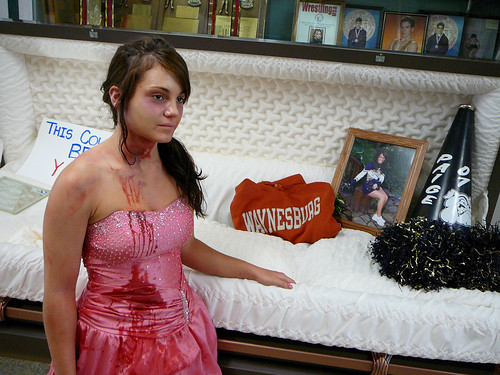 Gunsmith Frank Robinson in his Waynesburg, Pa., workshop. Observer-Reporter photoMaster gunsmith says...
Gunsmith Frank Robinson in his Waynesburg, Pa., workshop. Observer-Reporter photoMaster gunsmith says...
It's custom-made that countsBy Jon Stevens
WAYNESBURG, Pa. – Frank Robinson, like many 15-year-olds in the 1950s, wanted a rifle so he could go hunting with his friends.
But also like many 15-year-olds in the 1950s, Robinson didn't have any money to buy a factory-made rifle.
He sent away to Klein's, a mail order company in Chicago, and for $29, purchased a 1917 Enfield ex-military rifle.
The teenager, who was living in Richhill Township just outside of Wind Ridge at the time, also purchased a kit from a company in Waseka, Minn., to reblue the gun metal.
"And, I also bought some Japanese woodworking chisels," said Robinson, 67, who owns and operates Robinson Custom Guns at 861 Ridge Road, Waynesburg.
So, with his 1917 Enfield, his bluing agent and chisels, Robinson "sat down, fitted things up" and proceeded to strip down the rifle.
His neighbors and friends saw the finished work and decided they would like to have something like that.
Soon, he was taking orders and was making some money, "which I needed as a kid.
"You have to remember, there were no gun laws, no restrictions and no licensing we have today," Robinson said.
Now, nearly 52 years after he made that first rifle, Robinson is considered to be one of the premier gunsmiths in the country.
And, he is not reluctant to say he was self-taught.
"Working from my basement, I developed my talents. This presented a challenge, one that I really enjoyed, with my hobby becoming a very big part of my life," he said.
Robinson's day job, so to speak, was working for Carnegie Gas Co., but since his retirement in 1997, his "hobby" has become his livelihood.
And he is doing quite well at it.
Many, if not most, of his customer business comes from long-distance advertising or from the Internet.
"My work has been written up in Rifle magazine and people from around the country who are very interested in buying a custom-made gun know where to look," he said.
Robinson begins his most popular custom creations with Greene County walnut wood.
"We make only a true custom wood stock, no synthetics, and our rifles are as accurate as they are beautiful," he said.
Robinson buys stump wood and pieces of walnut from the part of the trunk where the limbs attach, where he says the grain is best.
He has the wood cut by a portable sawmill, leaving bark in place, and then dries the wood for nine to 12 months before cutting it into planks.
He often orders English walnut and other select woods from as far away as California.
Customers can choose the wood and the design specifications, including checkering. They can expect delivery within 12 months. The rifle is created to order. Accuracy is guaranteed.
"No two guns are ever alike," Robinson said. "Cookie-cutter guns are produced from manufacturers. Our rifles, that are worked on between 40 and 50 hours each, provide the finest materials handcrafted for outstanding accuracy and appearance at an affordable price to our customers."
Robinson said in a good year, he can make 30 rifles. "We do shotguns and bolt-action rifles. No assault weapons," he said.
He also said he does very little repair work, "except for the convenience of some customers. We are now listed as a manufacturer and most of our business is creating rifles."
To eliminate time and reduce costs, Robinson built his own power carver, a machine that duplicates stocks from original and old patterns. It cost him $1,200 to make. A similar cutter from the factory costs about $16,000.
The most Robinson has ever charged for making a rifle is $5,000, but actually, "When it comes to financial considerations, there are some people willing to pay two to three times what I charge," he said.
Robinson said many gunmakers require the buyer to purchase the action (the metal working that actually fires the weapons). "Some will charge $8,000 to $10,000 for a custom-made gun," he said.
He remembered being at a gun show in Pittsburgh where he and others had their products on display.
People would walk past and admire his guns, but would leave without making a purchase.
A few booths away, another gunsmith from Harrisburg told Robinson that he had a "fine product," but Robinson said no one was buying.
"That man told me I had to charge higher prices because buyers feel the more expensive the gun the better the quality. All I was trying to do was give a good product at a reasonable price."
And just how much people are willing to pay for a quality custom-made rifle was demonstrated when a man came in to his shop in Waynesburg carrying an English Purdy.
"He asked me if I knew what I was looking at and I said, 'Yes, it is a Purdy.'"
The man wanted the stock replaced with English walnut and asked Robinson, "how much?"
"I told him about $3,000 and he told me I was $17,000 cheaper than Purdy. The weapon he had cost $165,000," Robinson said.
Purdy is a London-based company and Robinson said many times prices are dictated by the name. Purdy is top-of-the-line.
Robinson is a man with a sound work ethic. Having worked two jobs – the gas company and gun-making for most of his life – he was able to put four kids through college, including one through medical school.
"Forbes magazine did a story once on the best investments. It ranked the top three this way: Guns, real estate and gold."
(Jon Stevens is bureau chief of the Observer-Reporter/Greene County. His story originally appeared in Greene County Living, a publication of the Observer-Reporter. It was reprinted with permission.)
 So far this Halloween season I've walked behind Jesus on a parade float tossing candy to children in Charleroi, Pa., and passed a cow on Rollerblades speeding down East Carson Street in Pittsburgh's South Side.
So far this Halloween season I've walked behind Jesus on a parade float tossing candy to children in Charleroi, Pa., and passed a cow on Rollerblades speeding down East Carson Street in Pittsburgh's South Side.




























